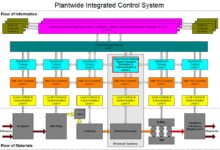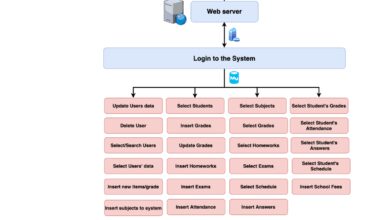System Development Life Cycle: 7 Powerful Stages Revealed
Ever wondered how complex software systems come to life? It all starts with a structured journey known as the system development life cycle. This proven framework guides teams from idea to deployment—and beyond.
What Is the System Development Life Cycle?

The system development life cycle (SDLC) is a disciplined, structured approach to developing information systems. It encompasses a series of well-defined phases that guide the creation, implementation, and maintenance of software solutions. Whether you’re building a mobile app, enterprise resource planning (ERP) system, or a simple website, SDLC provides the roadmap to ensure quality, efficiency, and alignment with user needs.
Core Definition and Purpose
At its heart, the system development life cycle is about minimizing risks and maximizing outcomes. It breaks down the complex process of software development into manageable stages, each with specific goals, deliverables, and review points. This structure helps teams avoid costly mistakes, reduce rework, and deliver systems that meet or exceed stakeholder expectations.
- Ensures systematic planning and execution
- Facilitates early detection of flaws
- Improves communication between stakeholders and developers
According to the ISACA Journal, organizations that follow a formal SDLC report up to 40% fewer post-deployment defects compared to those using ad-hoc methods.
Historical Evolution of SDLC
The concept of the system development life cycle emerged in the 1960s alongside the rise of mainframe computing. Early developers needed a way to manage increasingly complex programming tasks, leading to the creation of structured methodologies. Over time, SDLC evolved from rigid, linear models to more flexible, iterative approaches.
- 1960s–1970s: Waterfall model dominates
- 1980s–1990s: Rise of prototyping and iterative models
- 2000s–Present: Agile, DevOps, and hybrid frameworks take center stage
“The SDLC is not just a technical process—it’s a management tool that brings predictability to innovation.” — Dr. James Cadre, MIT Sloan School of Management
The 7 Key Stages of the System Development Life Cycle
A comprehensive understanding of the system development life cycle requires a deep dive into its seven core stages. Each phase builds upon the previous one, forming a cohesive workflow that ensures thoroughness and accountability throughout the development process.
1. Planning and Feasibility Analysis
This initial phase sets the foundation for the entire project. It involves defining the problem, identifying objectives, and assessing whether the proposed system is technically, economically, and operationally feasible.
- Technical Feasibility: Can we build it with current technology?
- Economic Feasibility: Will the benefits outweigh the costs?
- Operational Feasibility: Will users adopt and use the system effectively?
A feasibility study often includes a cost-benefit analysis, risk assessment, and resource planning. Tools like SWOT analysis (Strengths, Weaknesses, Opportunities, Threats) are commonly used. For example, a healthcare provider considering a new patient management system would evaluate integration with existing EHR platforms, regulatory compliance (like HIPAA), and training requirements.
Learn more about feasibility studies from the Project Management Institute.
2. System Analysis and Requirements Gathering
In this phase, analysts work closely with stakeholders to gather detailed requirements. The goal is to understand what the system must do, not how it will do it. This stage transforms vague ideas into concrete, actionable specifications.
- Conduct interviews, surveys, and workshops with end-users
- Document functional requirements (e.g., login, search, reporting)
- Define non-functional requirements (e.g., performance, security, scalability)
Techniques like use case modeling, data flow diagrams (DFD), and Unified Modeling Language (UML) are widely used. A retail company developing an e-commerce platform might specify that the system must handle 10,000 concurrent users during peak sales with a response time under two seconds.
The BCS Guide to Requirements Engineering emphasizes that poor requirement gathering is the root cause of over 70% of project failures.
3. System Design
Once requirements are clear, the design phase begins. This is where architects and developers create the blueprint for the system. It includes both high-level architecture and detailed technical specifications.
- Define system architecture (monolithic, microservices, cloud-native)
- Design user interface (UI) and user experience (UX)
- Specify database schema, APIs, and integration points
Design documents typically include wireframes, ER diagrams (Entity-Relationship), and technology stack choices. For instance, a fintech app might use React for the frontend, Node.js for the backend, and PostgreSQL for the database, hosted on AWS with Kubernetes for orchestration.
Design decisions made here have long-term implications on maintainability, performance, and security. A well-documented design phase reduces ambiguity and sets clear expectations for developers.
4. Development and Coding
This is where the actual building happens. Developers write code based on the design specifications. The development environment is set up, version control systems (like Git) are used, and coding standards are enforced.
- Write modular, testable code
- Integrate third-party libraries and APIs
- Conduct peer code reviews
Modern development often follows Agile practices, with work divided into sprints. Continuous Integration (CI) tools like Jenkins or GitHub Actions automate testing and deployment of code changes. For example, every time a developer pushes code, automated tests run to ensure no regressions are introduced.
According to a Stackify report, teams using CI/CD practices deploy code 208 times more frequently than those that don’t.
5. Testing and Quality Assurance
No system is ready for release without rigorous testing. This phase ensures the software behaves as expected and is free of critical bugs. Testing is multi-layered and includes various types of assessments.
- Unit Testing: Individual components are tested in isolation
- Integration Testing: Checks how modules interact
- System Testing: Validates the complete system against requirements
- User Acceptance Testing (UAT): End-users verify the system meets their needs
Automated testing frameworks like Selenium, JUnit, and Cypress are widely used. Performance testing tools like JMeter simulate high traffic to ensure scalability. Security testing, including penetration testing and vulnerability scanning, is critical—especially for systems handling sensitive data.
A Gartner study found that organizations investing in automated testing reduce defect leakage to production by up to 60%.
6. Deployment and Implementation
After successful testing, the system is deployed to the production environment. This phase can be done in several ways, depending on risk tolerance and business needs.
- Big Bang Deployment: Full switch from old to new system at once
- Phased Deployment: Roll out features gradually
- Parallel Running: Old and new systems run simultaneously for comparison
DevOps practices have revolutionized deployment. Tools like Docker, Kubernetes, and CI/CD pipelines enable zero-downtime deployments and rapid rollback if issues arise. For example, Netflix uses automated canary releases, where new versions are rolled out to a small subset of users first.
Proper deployment planning includes data migration, user training, and rollback strategies. A failed deployment can cost millions—British Airways’ 2017 IT outage, caused by a configuration error during deployment, cost over £80 million.
7. Maintenance and Evaluation
The system development life cycle doesn’t end at deployment. Maintenance ensures the system continues to function effectively over time. This phase includes bug fixes, performance tuning, and feature enhancements.
- Corrective Maintenance: Fixing bugs discovered post-deployment
- Adaptive Maintenance: Updating the system for new environments (e.g., OS upgrades)
- Perfective Maintenance: Improving performance or usability
- Preventive Maintenance: Proactively addressing potential issues
Many organizations allocate 15–20% of their IT budget to maintenance. Regular evaluation through user feedback, system logs, and performance metrics helps prioritize updates. For example, a banking app might add biometric login based on user demand.
The IEEE Standard for Software Maintenance outlines best practices for managing this critical phase.
Popular SDLC Models and Methodologies
While the system development life cycle outlines the stages, various models define how those stages are executed. Each model has its strengths and is suited to different types of projects.
Waterfall Model
The Waterfall model is the oldest and most linear approach to the system development life cycle. Each phase must be completed before the next begins, with no overlap.
- Clear, sequential phases
- Extensive documentation
- Difficult to accommodate changes once a phase is complete
Best suited for projects with stable, well-understood requirements—like government systems or aerospace software. However, its rigidity makes it less ideal for dynamic environments.
Agile Model
Agile is an iterative and incremental approach that emphasizes flexibility, collaboration, and customer feedback. Instead of a single, long development cycle, Agile breaks the system development life cycle into short sprints (usually 2–4 weeks).
- Delivers working software frequently
- Encourages adaptive planning and evolutionary development
- Relies on cross-functional teams and daily stand-ups
Popular frameworks under Agile include Scrum, Kanban, and Extreme Programming (XP). A startup building a social media app might use Scrum to quickly iterate based on user feedback.
The Agile Manifesto values individuals and interactions over processes and tools, making it ideal for fast-paced, innovative environments.
Iterative and Spiral Models
The Iterative model develops the system in cycles, with each iteration producing a working version that gets refined over time. The Spiral model combines iterative development with risk analysis, making it ideal for large, high-risk projects.
- Each cycle includes planning, risk analysis, engineering, and evaluation
- Allows for early delivery of partial functionality
- Highly customizable based on project needs
NASA and defense contractors often use the Spiral model due to its emphasis on risk management. For example, a missile guidance system might go through multiple spiral iterations, each addressing specific safety and performance risks.
Benefits of Following the System Development Life Cycle
Adopting a structured system development life cycle offers numerous advantages that go beyond just delivering software. It transforms development from a chaotic process into a predictable, measurable, and repeatable discipline.
Improved Project Management and Control
SDLC provides clear milestones and deliverables, making it easier to track progress and manage resources. Project managers can use Gantt charts, burndown charts, and milestone reviews to keep the team on schedule.
- Enables accurate budgeting and timeline forecasting
- Facilitates stakeholder communication through regular status reports
- Reduces the likelihood of scope creep
A PMI report found that projects using formal SDLC methods have a 28% higher success rate than those without.
Higher Quality and Reliability
By enforcing testing, reviews, and documentation at every stage, SDLC significantly improves software quality. Defects are caught early, when they are cheaper and easier to fix.
- Reduces post-release bugs and downtime
- Enhances system stability and performance
- Builds user trust and satisfaction
For example, a hospital using SDLC to develop a patient monitoring system can ensure it meets strict safety and regulatory standards before going live.
Cost and Time Efficiency
While SDLC may seem time-consuming upfront, it saves time and money in the long run. Early planning and requirement validation prevent costly rework later in the project.
- Minimizes wasted effort on features that don’t meet user needs
- Reduces emergency fixes and technical debt
- Optimizes resource allocation across phases
A study by the Standish Group found that projects following SDLC principles are 2.5 times more likely to stay within budget.
Common Challenges in the System Development Life Cycle
Despite its benefits, the system development life cycle is not without challenges. Organizations often face obstacles that can derail even well-planned projects.
Changing Requirements
One of the biggest challenges is managing evolving user needs. In fast-moving industries, requirements can change rapidly, making rigid models like Waterfall less effective.
- Users may not know what they want until they see a prototype
- Market conditions can shift during development
- Stakeholders may have conflicting priorities
Solution: Adopt Agile or hybrid models that allow for flexibility and continuous feedback. Regular sprint reviews and backlog grooming help keep the project aligned with current needs.
Communication Gaps
Poor communication between developers, analysts, and stakeholders can lead to misunderstandings, missed requirements, and rework.
- Technical teams may use jargon unfamiliar to business users
- Remote or distributed teams face coordination challenges
- Documentation may be incomplete or outdated
Solution: Use collaborative tools like Jira, Confluence, or Microsoft Teams. Conduct regular meetings and encourage open dialogue. Create visual models (like wireframes) to bridge the gap between technical and non-technical stakeholders.
Resource Constraints
Many projects struggle with limited budgets, tight deadlines, or insufficient skilled personnel.
- Small teams may be overburdened
- Key experts may be unavailable
- Infrastructure costs can escalate
Solution: Prioritize features using MoSCoW (Must have, Should have, Could have, Won’t have) analysis. Consider outsourcing non-core tasks or using cloud-based development environments to reduce overhead.
Best Practices for Implementing the System Development Life Cycle
To get the most out of the system development life cycle, organizations should follow proven best practices that enhance efficiency, quality, and collaboration.
Involve Stakeholders Early and Often
Engaging users, clients, and business leaders from the start ensures the system meets real needs. Regular feedback loops prevent costly surprises at the end.
- Conduct workshops during the analysis phase
- Share prototypes and demos frequently
- Use feedback to refine requirements and design
For example, a university developing a new student portal might form a committee of students, faculty, and administrators to guide the project.
Use Version Control and CI/CD
Modern development demands automation. Version control systems (like Git) track changes, while CI/CD pipelines automate testing and deployment.
- Prevents code conflicts and loss
- Enables rapid, reliable releases
- Supports collaboration across distributed teams
GitHub, GitLab, and Bitbucket are popular platforms that integrate with CI/CD tools like Jenkins, CircleCI, and Azure DevOps.
Document Everything
Comprehensive documentation is a cornerstone of the system development life cycle. It serves as a reference for developers, testers, and future maintainers.
- Requirements specifications
- Design diagrams and architecture
- Test plans and results
- User manuals and training guides
Tools like Confluence, Notion, or SharePoint help centralize documentation. Well-documented systems are easier to maintain and onboard new team members.
Future Trends in the System Development Life Cycle
The system development life cycle is not static. As technology evolves, so do the practices and tools that shape software development.
AI and Machine Learning Integration
Artificial intelligence is beginning to play a role in automating parts of the SDLC. AI-powered tools can generate code, detect bugs, and even predict project risks.
- GitHub Copilot suggests code snippets in real time
- AI-driven testing tools identify edge cases
- Predictive analytics forecast project delays
As AI matures, it could reduce development time by 30–50% for certain tasks, according to a McKinsey report.
DevSecOps: Security Built In
Security is no longer an afterthought. DevSecOps integrates security practices into every phase of the system development life cycle.
- Static and dynamic code analysis tools scan for vulnerabilities
- Security testing is automated in CI/CD pipelines
- Compliance checks are built into deployment gates
Organizations in finance, healthcare, and government are adopting DevSecOps to meet regulatory requirements and protect sensitive data.
Low-Code and No-Code Platforms
These platforms allow non-developers to build applications using visual interfaces. While not suitable for all systems, they accelerate development for simple workflows.
- Citizen developers can create internal tools
- Reduces burden on IT departments
- Enables rapid prototyping
Platforms like Microsoft Power Apps, OutSystems, and Mendix are gaining traction. However, governance and scalability remain challenges.
What is the main purpose of the system development life cycle?
The main purpose of the system development life cycle is to provide a structured, disciplined framework for developing high-quality software systems efficiently. It ensures that projects are well-planned, meet user requirements, and are delivered on time and within budget.
Which SDLC model is best for fast-changing requirements?
The Agile model is best suited for projects with fast-changing requirements. Its iterative nature allows teams to adapt quickly, incorporate feedback, and deliver functional software in short cycles.
How does SDLC improve software quality?
SDLC improves software quality by enforcing systematic testing, documentation, and reviews at every stage. Early detection of defects, clear requirements, and standardized processes reduce errors and enhance reliability.
Can SDLC be used for small projects?
Yes, SDLC can be scaled for small projects. While full formal processes may be overkill, even simplified versions of planning, design, testing, and maintenance improve outcomes and reduce risks.
What role does maintenance play in SDLC?
Maintenance is a critical phase in the system development life cycle. It ensures the system remains functional, secure, and relevant over time through bug fixes, updates, performance tuning, and feature enhancements.
Understanding the system development life cycle is essential for anyone involved in software development. From planning to maintenance, each stage plays a vital role in delivering successful systems. By choosing the right model, following best practices, and adapting to new trends, organizations can build software that is not only functional but also sustainable and secure. Whether you’re a developer, project manager, or business leader, mastering SDLC principles empowers you to drive innovation with confidence.
system development life cycle – System development life cycle menjadi aspek penting yang dibahas di sini.
Further Reading:









